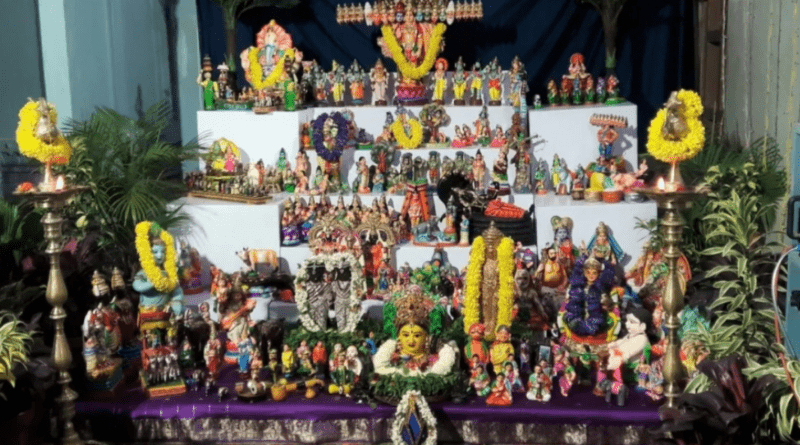New: How do South Indians observe the Golu Navratri tradition?
During the nine days of Navratri, which is celebrated with great zeal in South Indian houses, Golu guests—married women and children, especially tiny girls—generally drop in the nights to each home in a Golu hopping binge.
The nine nights of Navratri, devoted to the nine forms of the goddesses Lakshmi, Durga, and Saraswati, are widely celebrated throughout India. While the North celebrates with a fast and spiritual gathering such as mata ki chawki, the West celebrates with Garba, a famous dance genre, even while Durga Puja celebrations and feasts continue in the East. In the southern regions of Tamil Nadu and Karnataka, the Navratri celebrations take on added significance with the Bommai Golu, or Navratri Golu, a lavishly decorated display of dolls and miniatures.
The decorations are up until the last day of Navratri, with Dussehra or Vijaya Dashami celebrated on the tenth day.
On a step-like setup, the dolls include a plethora of gods, goddesses, animals, men, and children. Characters from the Ramayana, Puranas, and Dashavataram are prominently featured. Golu also represents certain subjects, such as the environment, space, mythology, current events, and others. “The Golu tradition brings forth an artistic symphony, creating unique and creative perspectives with themes ranging from epic sagas to rural life and contemporary interpretations.
Surprisingly, the Golu tradition has ancient roots, taking its name from the Tamil term “Ko Lu,” which means “display or exhibition. It is similar to how kings present themselves in temple mandapams during festivals.” The Golu tradition has strong architectural parallels to South Indian temples, reflecting the essence of the region’s history and traditions, as the dolls (made of sustainable materials such as clay, husk, and recycled papers) are artistically arranged to resemble a temple entryway.
In Tamil, golu denotes beauty or divine presence. “As we all know, Golu commemorates the triumph of good over evil. Golu is preserved in such a way that it reflects three stages of existence. “The first is basic survival, followed by growth, and finally by sublimity,” Aishwarya explained, adding that survival represents Durga Devi, growth represents Lakshmi, and sublimity represents Saraswati.
Karnataka:
Gombe Habba
Every year, eager people participate in the Gombe Habba or festival of dolls during Dasara or Navaratri. A variety of dolls are gathered for the Festival of Dolls and displayed on a multi-stage platform. may choose a theme or a legendary story to center their doll collection on for that particular year.
Doll collections frequently include significant representations of the theme’s principal pair or other key individuals. To represent the nine days of Navratri, nine dolls are often placed in various layers.
Typically, the most notable dolls are displayed at the top of the racks, while dolls representing minor or supporting parts or extra narrative lines are displayed at the bottom. Light decorations, lamps, garlands, and other decorations are utilized to boost visual appeal.
Dasara:
The fabled ceremony known as “Mysore Dasara,” which honors goddess Chamundeswari of Chamundi Hill, a manifestation of goddess Durga who vanquished the mighty demon Mahishasur, coincides with Navratri. During Dussehra, the palace in Mysore is decorated with lights and flowers, and the famous “Jamboo Savari” parade is held. It consists of elephant parades in which one of the elephants carries the Chamundeswari goddess.
Karnataka’s temples and cultural sites are decked for Navratri. There are several regal processions that take place during this time. People share gifts like coconuts and candies. In addition, several incidents from other stories and epics, such as the Mahabharata and Ramayana, are acted out in regional plays. People also visit the well-known “Mookambika Temple” in Udupi.




